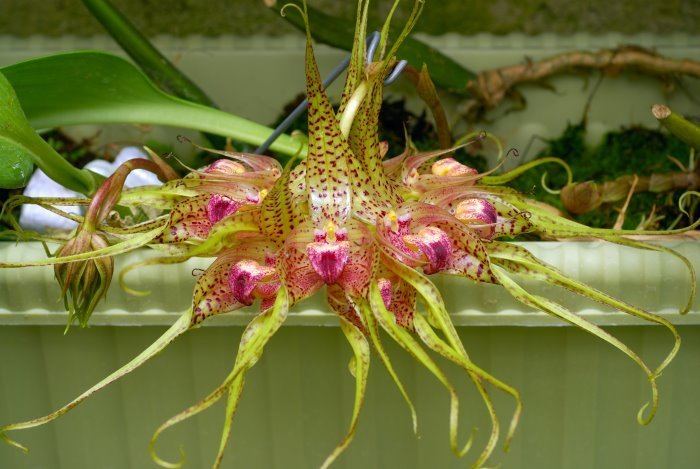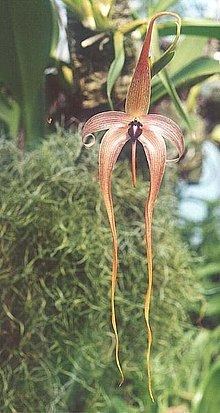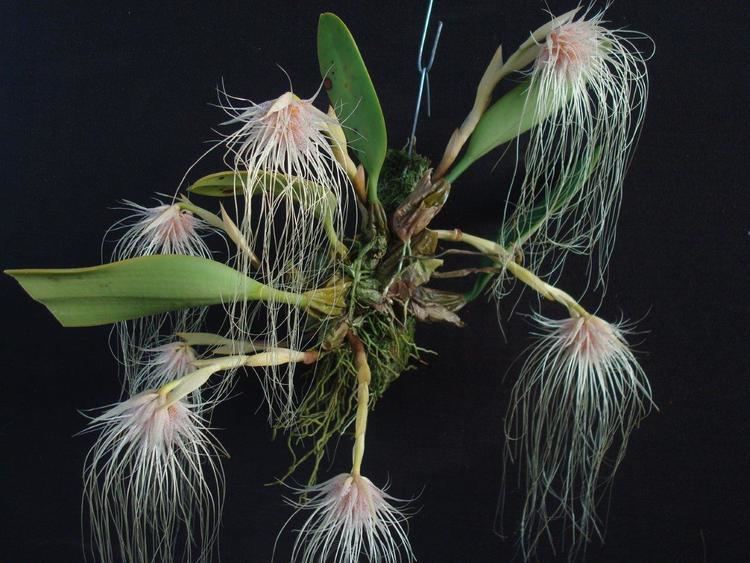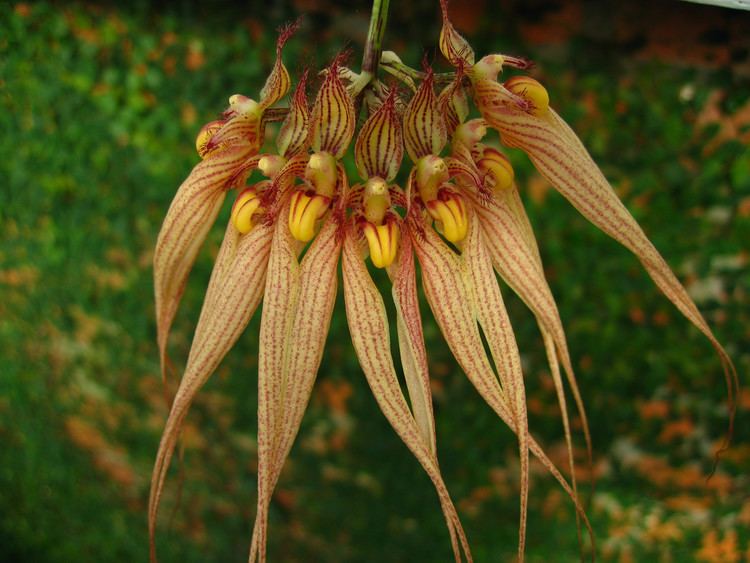Kingdom Plantae Subtribe Bulbophyllinae Higher classification Bulbophyllinae | Family Orchidaceae Tribe Podochileae Scientific name Bulbophyllum Rank Genus | |
 | ||
Lower classifications Bulbophyllum lobbii, Bulbophyllum medusae, Bulbophyllum echinolabium, Bulbophyllum ambrosia, Bulbophyllum carunculatum | ||
How to grow bulbophyllum orchids complete growing guide
Bulbophyllum is the largest genus in the orchid family Orchidaceae. With more than 2,000 species, it is also one of the largest genera of flowering plants, exceeded only by Astragalus. This genus is abbreviated in the trade journals as Bulb. It is found throughout most of the warmer parts of the world: Africa, southern Asia, Latin America, the West Indies, and various islands in the Indian and Pacific Oceans.
Contents
- How to grow bulbophyllum orchids complete growing guide
- A bulbophyllum primer part 1
- Phylogeny
- Structure
- Systematics
- Pollination
- Cultivation
- Species
- Conservation status
- References

A bulbophyllum primer part 1
Phylogeny

This genus was first described by Louis-Marie Aubert du Petit-Thouars (botanical abbreviation Thouars) in his book Histoire particulière des plantes orchidées recueillies sur les trois Iles Australes d’Afrique, de France, de Bourbon et de Madagascar, describing 17 Bulbophyllum species. There are now more than 2,800 records (accepted names and synonyms) for this genus. This large number and the great variety of its forms make the genus a considerable challenge for taxonomists: 120 sections and subgenera have been listed. The scientific name has been derived from the Latin word bulbus (bulb-like) and the Greek word phyllon (leaf), referring to the pseudobulbs on top of which the leaf is growing.

The center of diversity of this genus is in the montane forests of Papua New Guinea (more than 600 species) which seems to be the evolutionary homeland, though the genus is pantropical and widespread, occurring in Australia, Southeast Asia (with over 200 species in Borneo), India, Madagascar (with 135 species, some endemic), Africa and in tropical central and South America.
Structure

The general characteristics for this genus are : single-noded pseudobulbs, the basal inflorescence and the mobile lip. This genus covers an incredible range of vegetative forms, from tall plants with cane-like stems, to root climbers that wind or creep their way up tree trunks. Other members are pendulous epiphytes (growing on other plants), and quite a number that have developed succulent foliage to a greater or lesser degree. Some species are lithophytic. One species has almost become leafless and uses its pseudobulbs as the organs of photosynthesis.

These orchids with a sympodial growth have rhizomatous stems with often angled pseudobulbs. The thin to leathery leaves are folded lengthwise.
Systematics

the former segregate Genera Cirrhopetalum, Epicranthes, Mastigon & Sunipia were subsumed into the Genus Bulbophyllum according to Kew: World Checklist of Selected Plant Families and Genera Orchidacearum Volume 4: Epidendroideae (Part 1) ( by Alec M. Pridgeon, Phillip Cribb, Mark W. Chase, and Finn N. Rasmussen)
Pollination
Many Bulbophyllum species have the typical odor of rotting carcasses, and the flies they attract assist in their reproduction through pollination. Nevertheless, there are many species with mild and pleasant floral fragrance attract fruit flies (particularly Bactrocera spp.) via methyl eugenol, raspberry ketone or zingerone that also acts as floral reward during pollination.
The erect to pendent inflorescence arises laterally from the base of the pseudobulb. The flower form has a basic structural blueprint that serves to identify this genus. But this form can be very diverse : compound or single, with few to many flowers, with the resupinate flowers arranged spirally or in two vertical ranks. The sepals and the petals can also be very varied : straight or turned down, without footstalk or with a long claw at the base. They are often hairy or callous. There are two to four hard and waxy pollinia with stipes present or absent. The fruits are beakless capsules.
Cultivation
The fabulous and bizarre species that comprise this large genus have been the focus of orchid collectors for over a century. The plants require high humidity combined with good air movement and most of them are ever-blooming - flowering continuously throughout the year. They grow best at moderate light levels, but do not in deep shade. They are considered moderate-to-difficult to cultivate, and require a controlled growing environment to achieve some degree of success. They are not typically suitable as houseplants, and most will not thrive in a wardian case unless they receive adequate air movement.
The plants' growth habit produces widely spaced pseudobulbs along cord-like rhizome sections, and most of these plants are best accommodated on plaques. Some species in this genus can get very large, but most are small to medium-sized epiphytes from warm, moist, humid tropical forests. They can grow continuously year round with no apparent dormancy period if they are kept warm, are moderate feeders in cultivation, and must be kept moist all the time. They can tolerate dryness for short periods, but they have fine root systems which require moist conditions all the time.
Some of the smaller species do well in pots with small-diameter bark substrate. The plants produce very fine roots generally, and the roots are easily damaged. The plants react poorly to disturbance of their roots. They are easy to maintain once a good environment is established with high humidity and a fresh, buoyant, lightly circulating atmosphere being critical. Most of these species cannot tolerate cold temperatures or freezing.
The flowers produce various odors resembling sap, urine, blood, dung, carrion, and, in some species, fragrant fruity aromas. Most are fly-pollinated, and attract hordes of flies. Bulbophyllum beccarii in bloom has been likened to smelling like a herd of dead elephants and both this species and Bulbophyllum fletcherianum are variously described as making it difficult to walk into a greenhouse in which they are being cultivated if the plants are in bloom because of their overpowering floral odors.
Species
Some species are known for their extreme vegetative and floral forms:
New species are being discovered every year, such as:
Bulbophyllum nocturnum, a species first described in November 2011, is the only orchid known to open its flowers at night and close them during the day.
There is one intergeneric hybrid : Triasphyllum (abbr.: Tphm.) (Bulbophyllum x Trias)
Other selected species include:
Conservation status
A number of Bulbophyllum species are threatened with extinction, and are recognised as such by the World Conservation Union (IUCN):
Additionally, Bulbophyllum porphyrostachys is listed as near threatened.
